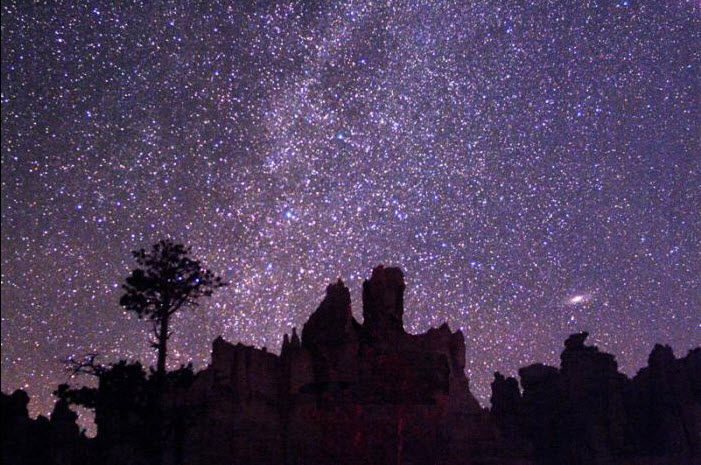
Or you can look at one of the many pictures available online:

Andromeda is the nearest large galaxy to our Milky Way. It is about 2 million light years away and it is a spiral galaxy not dissimilar to our own. Our Milky Way would look a lot like this to a viewer from the Andromeda Galaxy. Andromeda is larger than the Milky Way. We estimate that it contains about 1 trillion stars, versus “only” 300 billion in the Milky Way.
Scientists have discovered that the Andromeda Galaxy and the Milky Way are on a collision course, approaching each other at a speed of 245,000 miles per hour. This means that every hour the Andromeda Galaxy hurtles our way by more than the distance of the Moon from the Earth. At that rate, the two galaxies will “collide” about 4 billion years from now.

Would we get hit? If the Sun were the size of a ping pong ball, the nearest star to us, Proxima Centauri, would be a pea about 680 miles away. That’s how “densely packed” our galaxy is with stars. So even though billions of stars would race past each other at a speed of 245,000 miles per hour, statistically none will collide, but the gravitational forces will wreak havoc to their paths and the two galaxies will merge to become one super galaxy.
Too bad we can’t be around to see this. But then again, if there were viewers here at that time, what we see in the picture above would be their normal daily night sky, unchanged and apparently unmoving for many millions of years.
There won’t be any humans around then. The sun will have expanded and burned the Earth to a lifeless cinder crisp. Earth will be a dead rock circling that huge red sun none of us would recognize as our own.
It will be other civilizations, other beings alive then, on other planets near other stars, that will have the privilege of this view.
